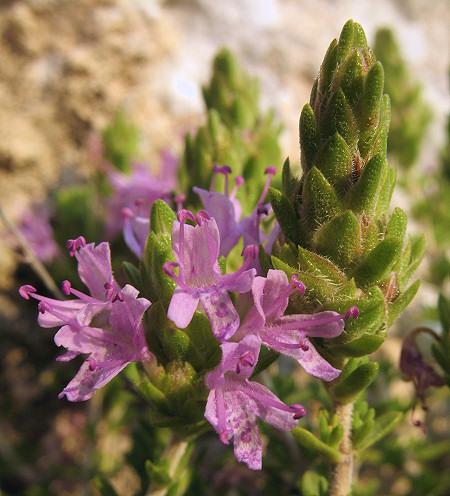A perennial herb native to the Mediterranean region, small, woody, and aromatic. Naturally found in rocky areas, such as pre-desert scrub, garrigue and phrygana, where it is usually found in large numbers. Depending on the prevailing conditions and soil depth specimens vary from small to large shrubs about 2 m across This species is also very important ecologically, particularly for bees, since it provides them with food and nutrients (nectar and pollen) during the early summer months when there are not many wild flowering plants.
Maltese honey is particularly praised for its quality especially when it is derived from this plant. In the past, local people used this plant in several other ways, such as for the treatment of bad breath, respiratory ailments, arthritis and rheumatism, as well as an antiseptic, amongst others. In the past, it was heavily exploited for a wide range of uses which led to its decline, and consequently, it has been protected by legislation since 1932. As a result of this, the species are now relatively frequent in the Maltese Islands.
Leaves are linear and rather fleshy and grow in clusters. Normally covered with tiny rough hairs and dotted with glands that give the plant its unmistakable fragrance especially when rubbing the leaves.
Flowers are rather small and vary from pink/lilac to violet in colour, (very rarely white) appear in clusters in late spring and remain through most of summer. They have a dorsally flattened cone-like shape, bearing protruding stamens (male organs) where pollen (male reproductive cells) is located.




